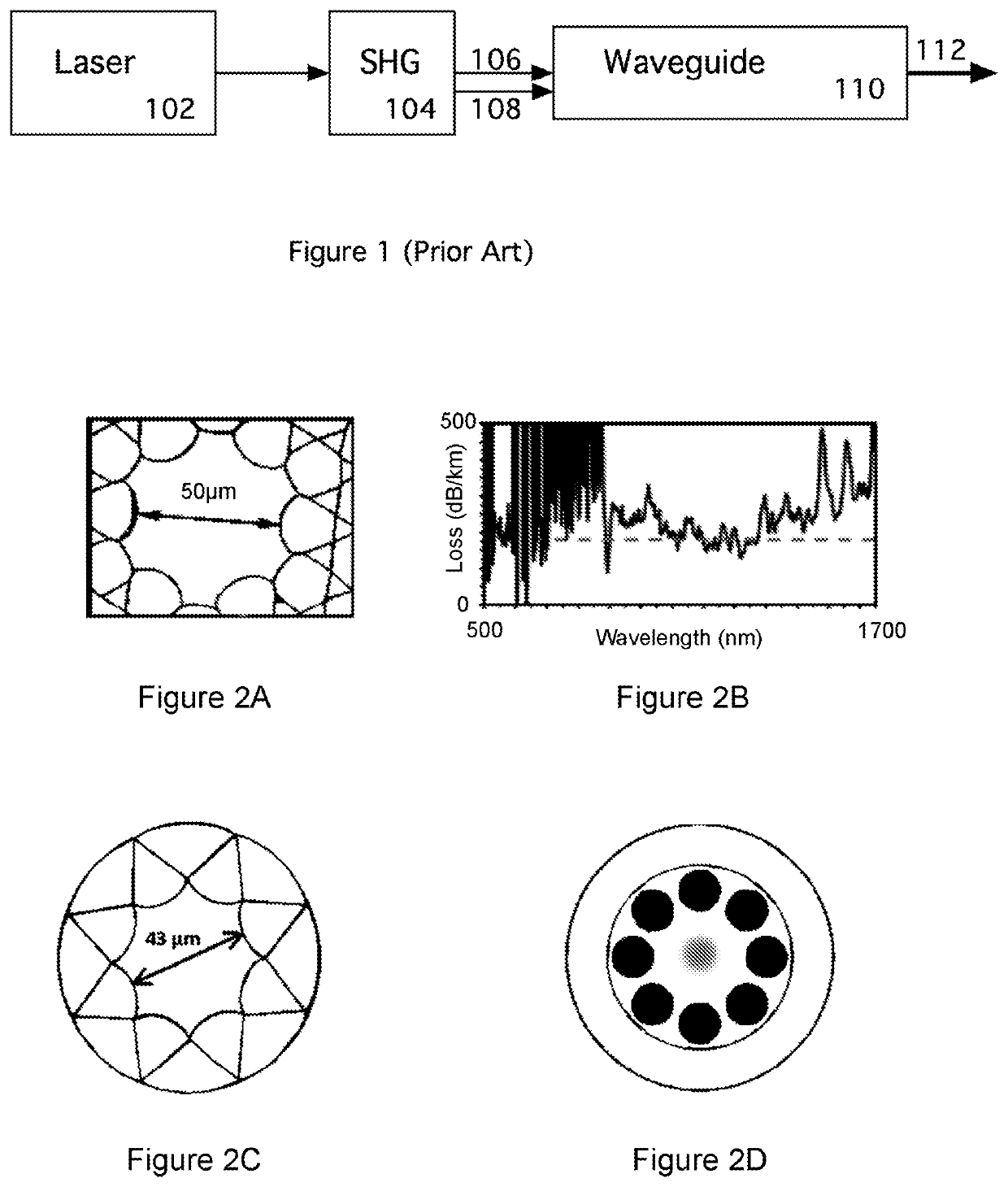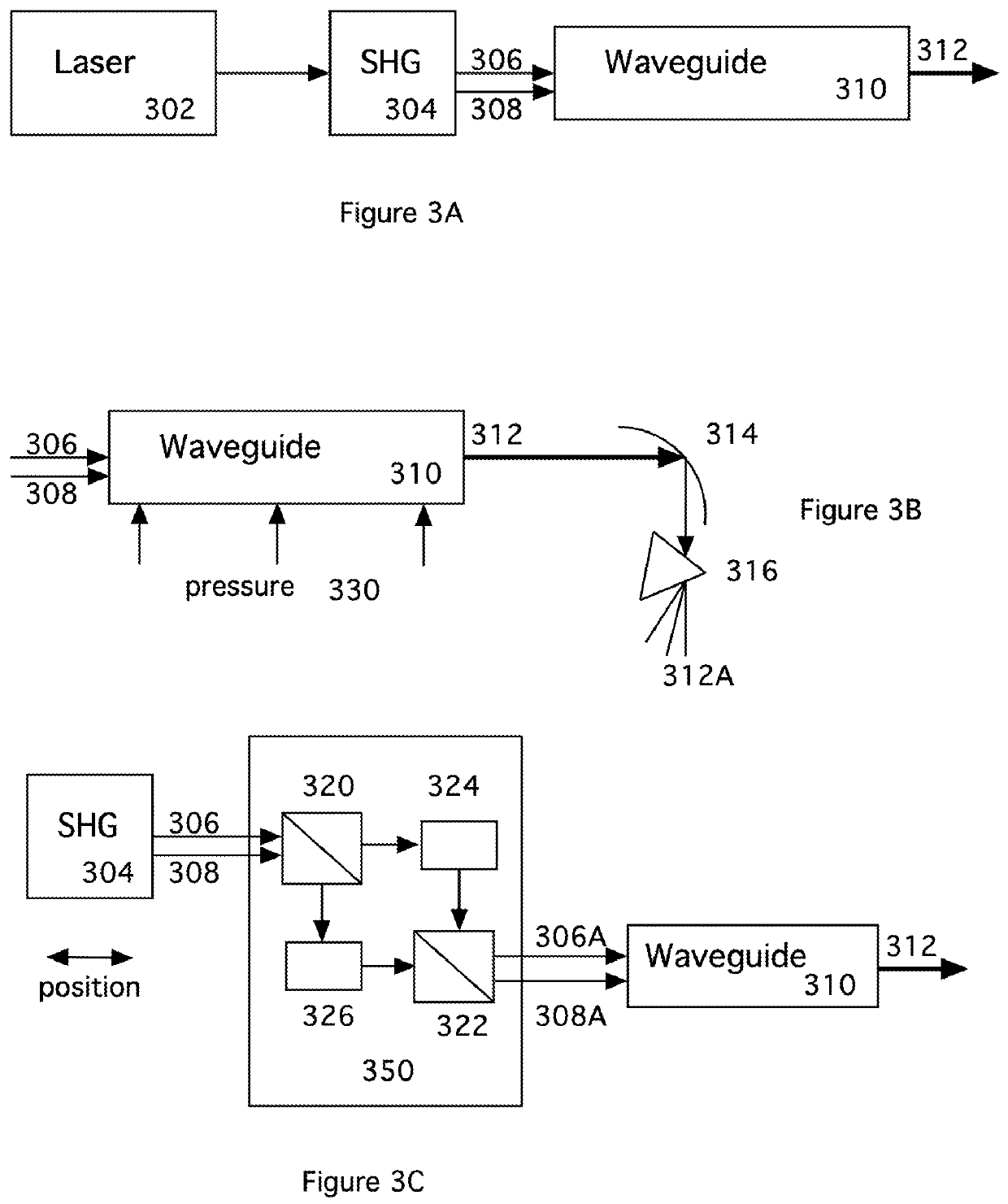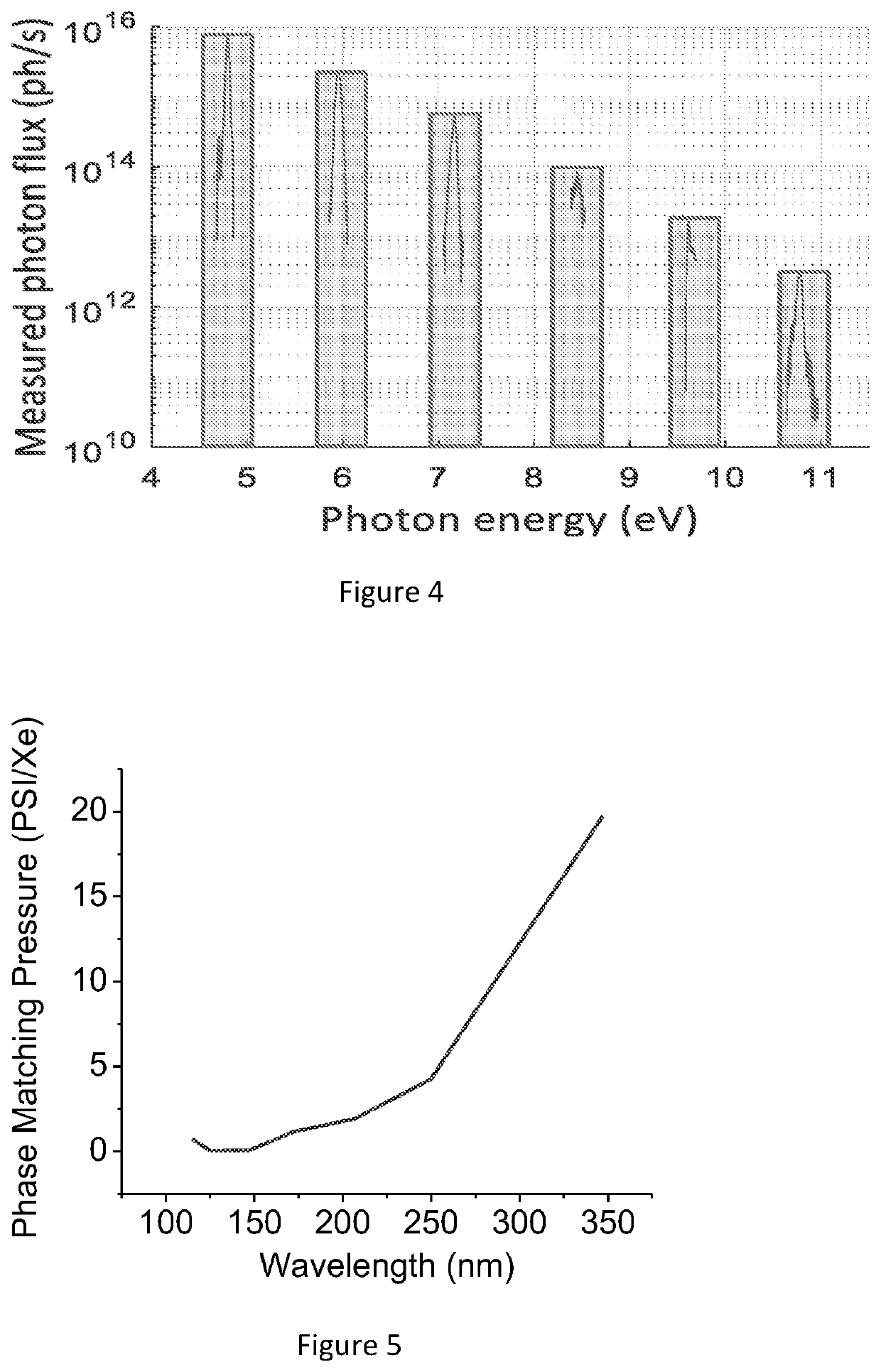Two-Color Wave Mixing Upconversion in Structured Waveguides
a waveguide and waveguide technology, applied in the field of waveguide upconversion in waveguides, can solve the problems of limited image resolution, low detection efficiency, and high correlation between small defects, and achieve the effect of avoiding bending losses
- Summary
- Abstract
- Description
- Claims
- Application Information
AI Technical Summary
Benefits of technology
Problems solved by technology
Method used
Image
Examples
Embodiment Construction
"d_n">[0031]FIG. 2A is a side cutaway view of a first kagome structured waveguide. FIG. 2B is a plot showing loss coefficient over wavelength in the waveguide of FIG. 2A, demonstrating low loss at ˜0.55 μm and 1-1.3 μm. In a one meter section, a loss of 0.18 dB is effectively full guiding. Rapid progress is being made in lowering losses. used for delivery of high-power 1 μm light for ultrafast laser micromachining applications. More than 36 W average power in picosecond pulses has been propagated through this design of fiber.
[0032]FIG. 2C is a side cutaway view of a second design “kagome” structured waveguide used for delivery of high-power 1 μm light for ultrafast laser micromachining applications. More than 36 W average power in picosecond pulses has been propagated through this fiber.
[0033]FIG. 2D is a diagram of electromagnetic modeling of a near-gaussian propagating mode in a “negative curvature” fiber. The shaded area in the center corresponds to the laser made, which is a wel...
PUM
 Login to View More
Login to View More Abstract
Description
Claims
Application Information
 Login to View More
Login to View More - R&D
- Intellectual Property
- Life Sciences
- Materials
- Tech Scout
- Unparalleled Data Quality
- Higher Quality Content
- 60% Fewer Hallucinations
Browse by: Latest US Patents, China's latest patents, Technical Efficacy Thesaurus, Application Domain, Technology Topic, Popular Technical Reports.
© 2025 PatSnap. All rights reserved.Legal|Privacy policy|Modern Slavery Act Transparency Statement|Sitemap|About US| Contact US: help@patsnap.com



